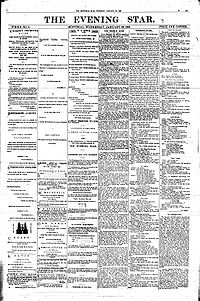Sun Media Corporation was the owner of several tabloid and broadsheet newspapers in Canada and the 49% owner of the now defunct Sun News Network. It was a subsidiary of Quebecor Media.

Le Journal de Montréal is a daily French-language tabloid newspaper published in Montreal, Quebec, Canada. It has the largest circulation of any newspaper in Quebec and is also the largest French-language daily newspaper in North America. Established by Pierre Péladeau in 1964, it is owned by Quebecor Media, and is hence a sister publication of TVA flagship CFTM-DT. It is also Canada's largest tabloid newspaper. Its head office is located on 4545 Frontenac Street in Montreal.
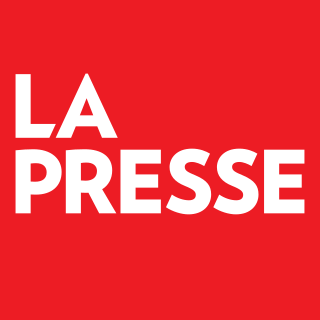
La Presse is a French-language online newspaper published daily in Montreal, Quebec, Canada. Founded in 1884, it is now owned by an independent nonprofit trust.
Southam Inc., also known as Southam News, Southam Newspapers, and Southam Newswire, was a media company and news agency in Canada. Company founder William Southam started as a paper boy for the London Free Press and eventually went on to acquire many prominent daily newspapers across Canada such as the Calgary Herald, Edmonton Journal, Ottawa Citizen, The Province and Winnipeg Tribune and created Southam Inc. in 1904 to run them.
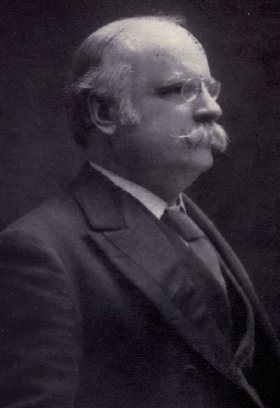
Charles Joseph Doherty, was a Canadian politician, lawyer, and judge from Quebec. He served as Minister of Justice from 1911 to 1921 and was one of Canada's representatives at the Paris Peace Conference.
Le Droit is a Canadian French-language digital weekly newspaper, published in Gatineau, Quebec. Initially established and owned by the Missionary Oblates of Mary Immaculate, the paper was published by Martin Cauchon and his company, Capitales Médias, from 2015 - 2019, when a cooperative was formed by the employees to continue publishing the paper.

Hugh Graham, 1st Baron Atholstan, known as Sir Hugh Graham between 1908 and May 1917, was a Canadian newspaper publisher.
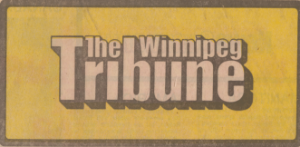
The Winnipeg Tribune was a metropolitan daily newspaper serving Winnipeg, Manitoba, Canada from January 28, 1890, to August 27, 1980. The paper was founded by R.L. Richardson and D.L. McIntyre who acquired the press and premises of the old Winnipeg Sun newspaper. It was often viewed as a liberal newspaper focused on local news and events. The paper was owned by Southam Inc at the time of its demise. It was frequently referred to as The Trib.
Alexander Brott,, born Joël Brod, was a Canadian conductor, composer, violinist and music teacher.

Henri Julien was a Canadian artist and cartoonist noted for his work for the Canadian Illustrated News and for his political cartoons in the Montreal Daily Star. His pseudonyms include Octavo and Crincrin. He was the first full-time newspaper editorial cartoonist in Canada.
The Montreal Daily News was a short-lived English language Canadian daily newspaper in Quebec. Quebecor founder Pierre Péladeau and British tabloid publisher Robert Maxwell teamed up to launch a competing English-language newspaper against The Gazette. The newspaper was published in a tabloid sized format, instead of broadsheet sized.

The Gazette, also known as the Montreal Gazette, is a Canadian English-language broadsheet daily newspaper which is owned by Postmedia Network. It is published in Montreal, Quebec, Canada.
Marvin Duchow was a Canadian composer, teacher and musicologist who lived and worked in Montreal, Quebec. He was an expert on Renaissance music and the music of eighteenth century France. The McGill University Music Library in Montreal is named after him, as is the Duchow String Quartet.

Amazones d'Hier, Lesbiennes d'Aujourd'hui is the name of a quarterly French language magazine published starting 1982 by a lesbian collective in Montreal made of Louise Turcotte, Danielle Charest, Genette Bergeron and Ariane Brunet.
The Royal Commission on Newspapers, popularly known as the Kent Commission, was a Canadian Royal Commission chaired by Tom Kent. It was created in 1980 in response to growing concerns over concentration of media ownership in Canada. The Commission's final report was delivered in 1981.

There were five important periods in the history of Canadian newspapers' responsible for the eventual development of the modern newspaper. These are the "Transplant Period" from 1750 to 1800, when printing and newspapers initially came to Canada as publications of government news and proclamations; followed by the "Partisan Period from 1800–1850," when individual printers and editors played a growing role in politics. The "Nation Building Period from 1850–1900," when Canadian editors began the work of establishing a common nationalistic view of Canadian society. The "Modern period" from 1900 to 1980s saw the professionalization of the industry and the growth of chains. "Current history" since the 1990s saw outside interests take over the chains, as they faced new competition from the Internet.
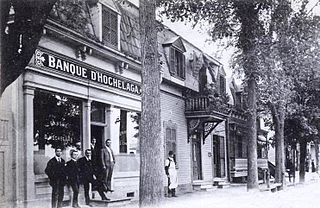
Banque d'Hochelaga was a Canadian bank based in Montreal, Quebec. It was active from 1874 until 1924, when it merged with the Banque Nationale to form Banque Canadienne Nationale.
Lieutenant George Buchanan Foster, was a Canadian First World War flying ace. He was credited with seven aerial victories.
The Canadian Handicrafts Guild was an association of Canadians involved in handicrafts that was founded in Montreal in 1906. At first the goal was to preserve and market traditional home crafts that were seen as being at risk of dying out. Demand for high quality products and a shift towards more "professional" craftspeople and modern designs placed stress on the organization. In 1967 the provincial branches became autonomous, and subsequently evolved separately. At the national level the Guild was merged with the Canadian Craftsman's Association in 1974 to form the Canadian Crafts Council, now the Canadian Crafts Federation.

Deborah Hurcomb (1867-1908) was a Canadian nurse who was trained in Montreal and served in the Second Boer War. She was one of two nursing supervisors from Canada who served in South Africa and was decorated for her service by the Duke of York, later King George V, in 1901.
